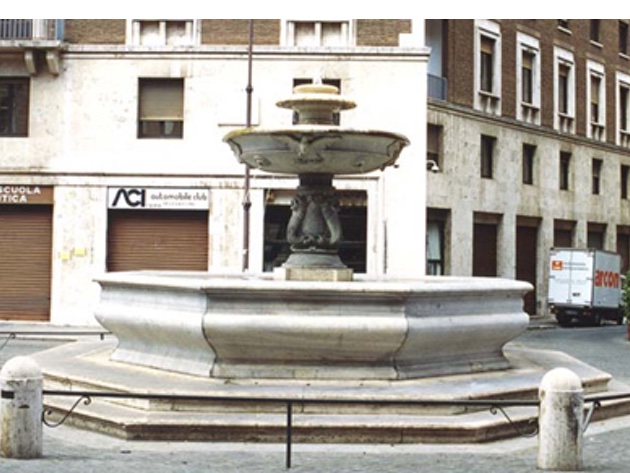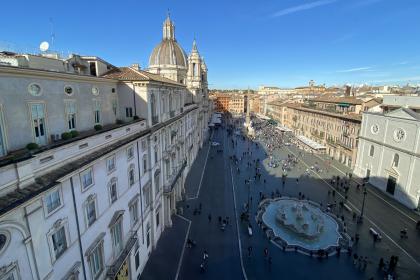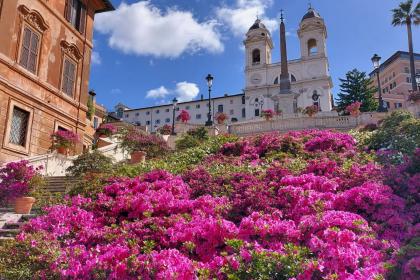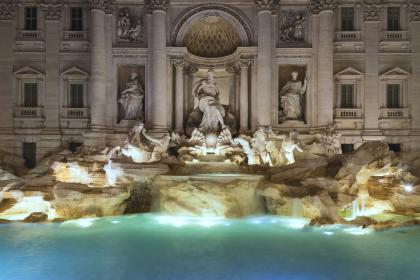
One of the oldest Renaissance fountains in Rome, it is also called the "Trullo fountain", because it was once placed in the middle of "Piazza del Trullo", now Piazza del Popolo. After the restoration of the Acqua Vergine aqueduct, completed in 1570, a secondary underground branching of the conduit was built, so as to be able to reach the area of the ancient Campo Marzio, a very populous one, and was therefore designed also the construction of some fountains.
The first was commissioned by Pope Gregory XIII, in 1572, to Giacomo Della Porta (1533-1602), in Piazza del Popolo, on the occasion of the expansion and urban planning of the square itself. The new fountain consisted of two basins of different diameters from which the water fell into a lower tank, octagonal in shape, resting on a base of three steps, also octagonal. The largest basin was carved with bas-reliefs depicting the coat of arms of Gregory XIII, a dragon with open wings.The project is attributed to Giacomo Della Porta, while the sculptural realization was entrusted to the French sculptor Giovanni Leminard who, for its construction, also used marble obtained from archaeological finds of ancient Rome, as was used at the time.
The original project envisaged placing the fountain in the center of the square, but the structure was too small for the size of the space; then in 1589, Pope Sixtus V decided to place the obelisk in the center of the square and a few years later the fountain was moved to a more decentralized position, at the beginning of Via del Corso. The original project envisaged placing the fountain in the center of the square, but the structure was too small for the size of the space; then in 1589, Pope Sixtus V decided to place the obelisk in the center of the square and a few years later the fountain was moved to a more decentralized position, at the beginning of Via del Corso.
Between 1818 and 1823 Giuseppe Valadier (1762-1839), had the fountain removed which, in 1849, was moved to the Janiculum, in front of the church of San Pietro in Montorio, where, however, it remained only twenty years before being removed, disassembled and placed in a municipal warehouse. When, in 1940, it was thought of reusing the fountain, the two upper basins had to be reconstructed (based on a detailed 17th century print), which, in the meantime, had been lost. On this occasion, the bas-reliefs that recalled the coat of arms of Pope Gregory XIII were alternated with others depicting an eagle with open wings, the coat of arms of the Borghese family, a representative of which was at the time Governor of Rome.
In 1950, the new fountain was reassembled and placed where it currently stands.
Photo: Courtesy Sovrintendenza Capitolina
Navona Square

 Condividi
Condividi
The most iconic square of Baroque Rome
Piazza di Spagna

 Condividi
Condividi
The Trevi Fountain

 Condividi
Condividi
The most famous of the Roman fountains: a jewel of water and stone
Information
 Condividi
Condividi
Location
To find out about all accessibility services, visit the Rome accessible section.











































